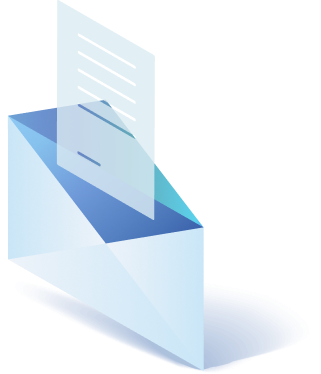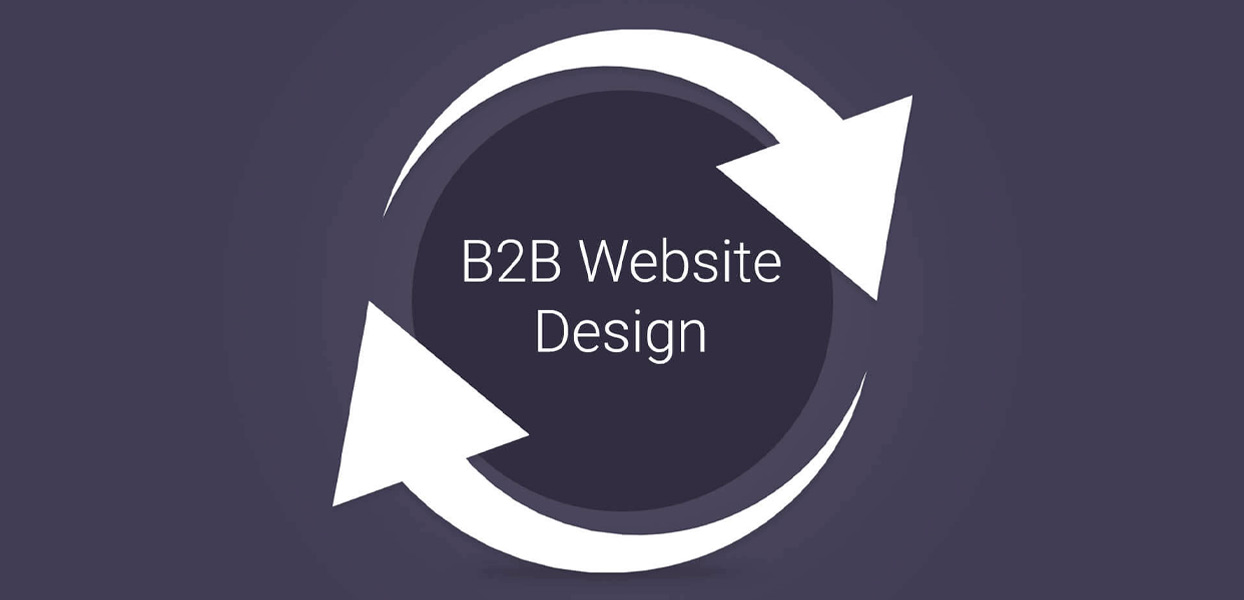Business-to-business (B2B) web design is a different undertaking than business-to-consumer (B2C) web design. The audiences are different. Which means the behavior of business-to-business website visitors isn’t the same as the behavior of B2C visitors.
Unfortunately, when it comes to website design or website redesign for B2B companies, there isn’t always enough research put into the market. Visitor desire, visitor behavior, and how specific designs appeal to specific targeted audiences.
Of course, it’s also important to determine what the desire is for the website. If the conversation between a designer and the person within the business who oversees making the website happen sounds anything like what’s written below. Then it’s just not going to work.
Designer: What do you want your homepage to look like?
Client: I want to have amazing graphics, but the first thing I want people to see is video XYZ. I’d also love this infographic to be there. Plus, I want it to say, “Welcome to our website. We have everything you need.”
- First, it is fine for a business to have a vision for the website that will be representing them. It is the job of the designer to marry that vision with a design that will get results. It’s imperative that the website represents the company.
- Second, saying “welcome” on a homepage is very old school and ineffective. “Welcome” has worn out its welcome over the years. Instead, it is important to cut to the chase and let people know what they are there to find out.
- Third, generic statements like “we have everything you need” also has no place on a B2B business website. One of the best website design tips a person could ever take to heart is to immediately start explaining what products or services are available and why the visitor needs them.
So what could the conversation between the professional website design company and the client look like?
Designer: What is the vision you have for your website and what do you wish for your website to accomplish?
Client: I want an attractive and functional website. I want to help our customers make an informed buying decision, moving them through the sales funnel as efficiently as possible.
If a client says that their services are such high-value services that their clientele will never buy online. The response of the designer needs to explain what makes the website an untapped way to build online revenues.
Differences Between Business-to-Business and B2C Website Design
The first thing a designer needs to do to show a client the value of their website is to answer the burning question, “what is a B2B website?”. Of course, when they are a business that serves other businesses, their website is the answer to this question. However, the definition goes much deeper than this. The way to truly define a business-to-business website and website design is to compare the principles to B2C websites and design.
The Design and Content Must Support Complex Decision-Making Processes
B2C websites support impulsive purchasing decisions. The complexity lies in the fact that this type of website targets other companies that need to consider several factors before making purchases. That’s why these elements must be in place when building the site:
- What is the website about?
- Who is the target audience?
- What is included on the site?
- What makes the website good?
- Does the content answer the buyer’s questions?
- Does the content answer why the company is the best choice compared to competitors?
It is imperative to show buyers that what the company has to offer will provide a solution for specific needs. Every inch of text must be clear about how well the company understands the buyer’s problem. And that there are answers to those problems.
Well-designed websites get to the point and make the solutions loud and clear. Even after the site is launched, testing must continue so adjustments can be made. That will make the website even more effective at reaching the target audience.
One way to really know what the customer wants is to simply poll some of them. A designer can ask them about their problems and if the product or services of the company solved those problems. The customer can also be asked about product or service performance. How they carried out the buying process. What made them decide to make a purchase, and how many people were involved in the buying decision.
While there are many elements to building a business-to-business website that is similar to building a B2C website, it’s the decision-making process that is different. Business customers don’t buy on impulse. Because there is usually some kind of oversight involved when spending company money.
Companies Have to Consider Compatibility and Regulation
Companies have internal regulations about spending. Which is another reason why the decision-making process is so complex when targeting this type of business audience with a website.
However, a purchase isn’t always simply a purchase because it can be part of a much larger system that requires compatibility. The product or service that is being considered for purchase must fit within existing operations. When creating content for a website, specifying how a product or service can fit within the business’s current workflows can be a major win.
In fact, great website design will ensure that it is loud and clear how easily a product or service can integrate into existing systems. Or why an upgrade or change is a good thing.
When building a site that is selling products or services that have some sort of compatibility at play, consider the following:
These are some B2B examples to consider when building a website. Whether its security systems, communication systems, automated tools, or manufacturing hardware. As many details as possible need to be provided to help with the complex decision-making process.
The Content Must Speak to Different Levels of Decision Makers
When building a website for business customers, there are the choosers and the users. The users then come in different user types, which will be covered a little later. Right now, the focus is on these two main groups.
The choosers are the decision makers, but they may never use the product or service that they are buying. However, they communicate frequently with the users to ensure the purchase is a sound one. Typically, a user will research a product or service and present the options to the decision maker.
Because companies make decisions in different ways, it is important that the content of the website speaks to the choosers and the users. The user is more concerned with how the product or service will serve them, but the chooser is more concerned about cost, integration reliability, customer support, and if the evidence provided by the user justifies the cost.
One way to help your users is to put together an advocacy kit on the website that will help them make their case to the choosers. This kit can include PowerPoint presentations, videos demonstrating the product or service, brochures, white papers, case studies, and anything else that provides adequate information.
Pricing Must Be Adequately Communicated Differently Than B2C Pricing
In a B2C world, a price is placed on an item and there is really no justification for the cost. It is what it is and that’s what a person will pay if they really want the product. For a chooser to decide to spend the money on a product or service, the pricing must be justified. For instance, a high degree of customization may justify the higher cost of a product or service compared to a competitor.
Then again, it can be nearly impossible to display pricing on a website because the level of customization can vary based on the needs of each business that is served.
The way to get around listing products or services that don’t have fixed pricing is to show real-world examples. Illustrate different pricing scenarios so the users and choosers understand how pricing works. With that understanding, the next step comes easier and that brings the company closer to making a purchase.
If tiered pricing is possible, each level should be easy to compare. Side-by-side illustrations help potential customers understand the differences between each plan so the right one can be chosen. These plans should be very simple to purchase.
The Language Must Speak to Small and Large Businesses
The language used in the content is one of the most complex parts of business website design. The site must speak to businesses of different sizes. The website has to become credible in the eyes of everyone from the mom-and-pop store owner to the users and choosers in large corporations.
For example, a company selling software needs to establish how their software can be used in businesses of different sizes. In other words, scalability needs to be made evident.
One way to achieve the scalability feat is to build multiple segments with each one catering to the business size. That way, the visitor can come to the site and click on “small business” if they are a small business or “enterprise” for large companies. Even within the enterprise segment, it’s good to tackle different size teams. It’s not out of the question for a large company to have a small team that needs the product or service.
If a product or service will work for different types of businesses, segments should be created for each one. For example, a single product or service may cater to healthcare facilities, schools, hotels, government, and dozens of industries. Let potential buyers know that their industry is served in the capacity they require.
When compared to a B2C website, fewer segments tend to be represented because it isn’t required. There is usually one target audience. In cases where there may be more than a one targeted audience, those individual groups may not have any sub-segments or very few.
Overall, B2B and B2C websites have a lot in common, but each must meet the distinct needs of their targeted audiences. However, the goals of a B2B online presence are much more complex than the run-of-the-mill B2C site. Because of these complex goals, usability can be low. Emphasizing better usability can help website visitors better research product and make those complex buying decisions.
B2B Website User Types
Earlier, users and the fact that there are different types were mentioned. Now it is time to learn about the different user types so you know exactly who is being dealt with when building the website.
When targeting users, it’s imperative to make them want to make the purchase by engaging them. Once engaged, they have to stay engaged. Keeping them engaged helps them convince the choosers that the service is worthwhile. However, it’s important to keep in mind that different companies have multiple types of users that the website has to appeal to. This is why the different jobs within the targeted industry should be considered.
If it isn’t immediately known what types of jobs would utilize the product or service, a little research can go a long way. From there, the different types of people that fulfill these roles can be considered. Some of them are:
- The supervisor who drives their team hard to be productive.
- The employee who is highly emotional and afraid to fail.
- The boss who is losing that connection with their employees and wants to change that.
- The intern trying to find their confidence.
- The chooser who wants to feel confident that they are making the right buying decision.
- The technical user who wants to ensure that they have all the latest tools.
Despite how different each person may be, the organization of the company is how they relate. A professional will learn about the company they are designing for and about the users involved in the decision-making process. Those people are:
- The user – The person who researches products or services that will meet their needs
- The chooser – The person who makes the decision to purchase the service.
- Administrator – The person out of a group of end users that keeps track of product or service usage. Manages user accounts, measures the outcome of usage, and oversees onboarding.
A good designer will create a buyer persona for each person involved in the process. A buyer persona is simply a “make-believe” person that displays a behavior similar to someone within the target market. When there is more than one type of person targeted, multiple personas should be created.
To create the personas, different groups of people can be interviewed. The company the website is for will most likely cooperate in connecting an interviewer with different people who can give the necessary information to create the personas.
If all of this makes business website design seem like a big job, that’s because it is. Simply throwing a website together and moving on is bad website design. When a website doesn’t perform the way that it should, the business may blame the designer. It’s up to the designer to know what the website is supposed to accomplish and the different methods to get there.
When a designer knows user roles, the target audience, the needs of their client, and all pertinent details, the conversation with a client looks more like this:
Designer: Do you have a preferred design and a specific vision for your website?
Client: I want a graphically amazing website that just gives the basics so my visitors will call us.
Designer: A business-to-business website for a business like yours has a lot of potential to drive a person down the sales funnel on the website. Today, many people want to accomplish as much as possible on the website before picking up the phone. Because instant gratification is imperative for saving time.
Client: Really? So what can you do to make my site perform this way?
Designer: There are actually different user segments that the website must speak to. Believe it or not, there are going to be various types of people looking at the website since more than one person is usually involved in the buying experience. I can research your target audience, divide it up into segments, and ensure the content speaks to all decision makers involved in the buying process.
When a designer is able to show a client that there is a solid understanding of the client’s market, target audience. And the people involved in the decision-making process. The client feels more confident about building a stronger online presence. Of course, that can make the designer more profitable. As well and lead to a long-term business relationship.
Understand the Business-to-Business Sales Funnel
Lastly, a good designer ensures that they understand the business-to-business sales funnel. It is different than the B2C sales funnel in that these are the steps:
- The user identifies that there is a problem and he or she wants to solve it.
- The chooser may do further research on solutions.
- The user becomes aware that a product or service exists that could provide a solution.
- Convinces the chooser to buy the product or service to solve the problem.
- The user researches the product or service to see if the solution truly exists.
- The chooser will create a list of solutions to choose the best one.
- The company will test the product or service through trials or demos.
- The decision is made to purchase the product or service.
Having a solid understanding of the sales funnel means that the website can be built with each of these elements in mind. This is a great way to smoothly move users and choosers through a majority of the sales funnel. If not all of it, using just the website.
Just Don’t Go for the Kill
There’s another important aspect of communicating through the website. And that is to not go for the kill right off the bat.
It used to be fine to put a “join now” or “sign up” button at the top of the website. This may work in the B2C world at times. However, people have caught on and they don’t like that hard sale staring them in the face. The moment they land on a website, especially businesses that have complex decisions to make. Shoving a “buy now” button in front of their noses makes them feel pressured.
To avoid inflicting pressure, the design should be intuitive so the visitor can research what they are there to research. Creating an intuitive design is also the time to create a visually appealing one that keeps the user engaged. It’s ok to bring the cool factor. Just because a site is being built to appeal to other businesses doesn’t mean the large or small business website design has to be uptight. It’s all about creating a great user experience.
However, a designer can’t over do it with sliders, lasers, and other impressive features. Too much can be overload. Plus, too much can make a page look crowded. A stuffed page can prompt a person to hit the back button in a heartbeat. As long as everything is organized, an appealing design isn’t off limits.
Hiring a Professional
Professional website design will provide a return on investment when the designer considers all the details before the design process begins. Everything from the target audience to who will be making the decisions must be taken into account before a single word is placed on the page.
Contact us today if you are ready to have a business website that is more than an online brochure, but something that can drive conversions.

Get a Custom Solution with Web Design Sun
At Web Design Sun, we specialize in building web applications for clients in every business and industry. If you’re interested in custom applications for your business, contact us today.
Contact us today to get started- #B2B


